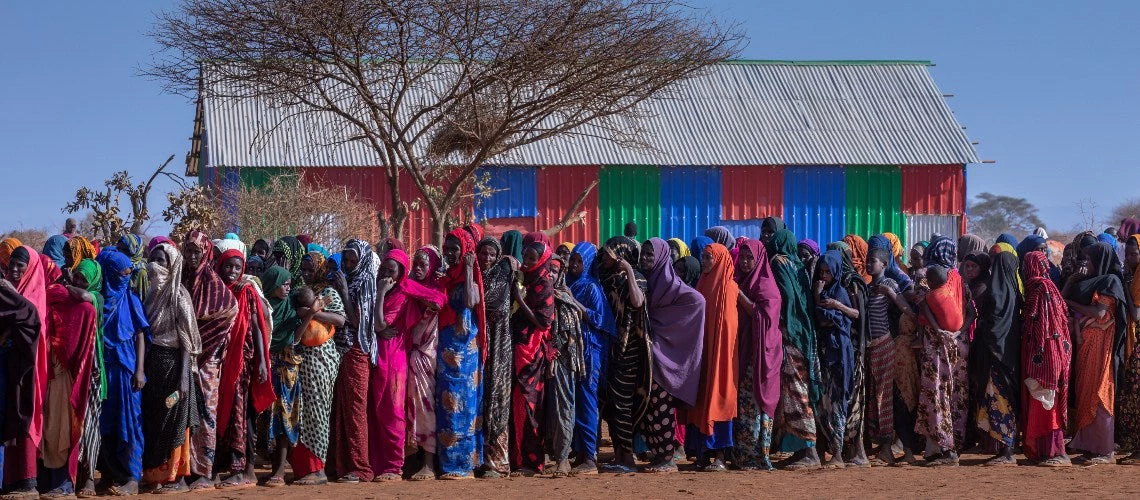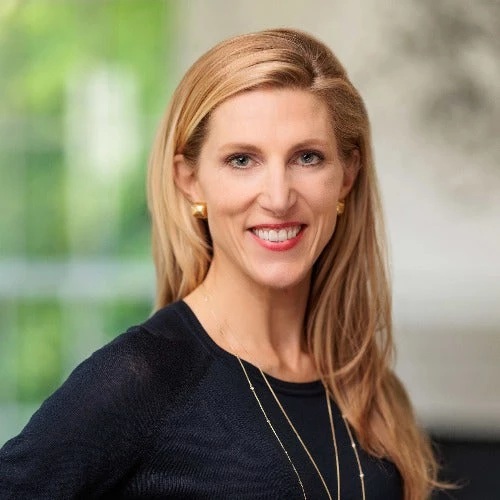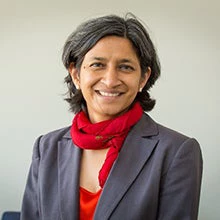 In Somali region of Ethiopia, near the town of Hargele, thousands of women and children are displaced by severe drought and are staying in dire conditions. ©UNICEF Ethiopia/2023/Mulugeta Ayene
In Somali region of Ethiopia, near the town of Hargele, thousands of women and children are displaced by severe drought and are staying in dire conditions. ©UNICEF Ethiopia/2023/Mulugeta Ayene
This op-ed was originally published in Devex on December 18, 2023.
Over the past year — with record-shattering high temperatures, explosive wildfires, intense drought, massive flooding, and destructive storms — no region has been immune to the signs of a warming climate.
This is our new normal. Even under the most optimistic scenarios, including the historic decision from the 28th United Nations Climate Change Conference, or COP 28, to transition away from fossil fuels, we will continue to see more climate-related crises with greater frequency and severity.
And climate change is killing us.
The health impacts of climate change can be felt both directly and indirectly. It is changing the patterns of infectious disease transmission, making deadly outbreaks and pandemics more frequent; elevating the risk of heat-related illnesses; exacerbating noncommunicable diseases; worsening mental health; and affecting maternal and neonatal health.
Drought is accelerating food insecurity and the threat of malnutrition. We are seeing increasingly strained access to clean air and water, sanitation, food, and other basic human health needs. The impacts of climate change are increasing inequities, undermining long-term economic growth, and driving migration and insecurity while contributing to cycles of poverty and instability in the most vulnerable countries. All of this undermines our progress toward the Sustainable Development Goals.
Without action, we are going backward
The World Health Organization says climate change is the single greatest threat facing humanity. If nothing is done, at least 21 million people will die from its effects by 2050. The World Bank estimates show climate change will push an additional 132 million people into extreme poverty by 2030 with at least 44 million — or one-third of them — by the negative health impacts of climate-related events.
Simply put, the climate crisis is driving a global public health emergency, with ramifications far beyond our health.
Recognizing action on climate change and health must be interconnected and is essential to our future. The first Health Day at a U.N. climate summit was held at COP 28 in Dubai. This was a critical first step to accelerating lifesaving decisions and investments. But it requires bold action by leaders, funders, and partners to change how we do business. We must be faster and more ambitious.
A just transition toward clean energy to protect people’s health
At the crux of any meaningful progress is the commitment of the global community to a just transition toward clean energy to protect people’s health, well-being, and livelihoods. We must address immediate needs and build resilience in the medium to longer term, especially for the most vulnerable who are disproportionately affected. Here are four areas to ensure a just energy transition that puts health at the center of the climate crisis response:
- Country-led plans
We must support country-led plans for a holistic approach to strengthening health systems to ensure they are climate-responsive, resilient, low-carbon, and better prepared to respond to new threats.
Prioritizing adaptation and mitigation strategies not only saves lives now, but it also bolsters our defenses by reducing growing inequity and ensuring the resilience of communities, health care infrastructure, and ultimately people’s well-being.
- New resources
We must mobilize new and meaningful resources to transform health systems and related outcomes. Currently only 0.5% of climate funding is directed toward health. While $1 billion was committed to climate and health at COP28, this falls far short of the investments required for adaptation.
All partners, including health agencies, development banks, philanthropies, and the private sector have a critical and complementary role to play. For example, the Development Bank Working Group for Climate-Health Finance is bringing together multilateral development finance institutions and public development banks to harmonize approaches, coordinate more effectively, and scale co-investment opportunities.
The World Bank and the Global Fund to Fight AIDS, Tuberculosis, and Malaria are expanding their country-level collaboration by developing joint investment plans to increase climate-health financing and accelerate access to resources for communities. And WHO and the World Bank are working to remove blockages to climate and health funding through the Alliance for Transformative Action on Climate and Health. There is also a powerful role for philanthropy to rapidly mobilize funds as a bridge to large-scale public financing and to underwrite innovation and learning.
- Private-sector mobilization
We must engage and help mobilize the private sector to be a part of the solution including supporting national authorities to fully integrate the private sector into the climate and health response.
Most low- and middle-income countries have mixed public and private health service delivery. Better policy and regulation can enable the private sector to expand access to services, strengthen resilience, provide innovative health care solutions, and both bolster and “green” supply chains. Further, the private sector can help drive demand for greener services and products by committing to more sustainable business practices.
- Faster action
Finally, we must act faster and more boldly. At the heart of the climate and health nexus is the fact that lives are being lost or lived poorly every day. Inaction means even more will suffer or die. The decision at COP 28 to transition away from fossil fuels is important. But more is needed.
To secure a livable planet, health must be at the center of the climate change discussion. By scaling up collective action to strengthen health systems across the globe, millions of lives can be saved, economies strengthened, and inequities reduced.
The choices we make now will determine whether current and future generations will survive and thrive — or continue to suffer even more deadly and costly climate-driven health challenges.
To receive weekly articles, sign-up here



Join the Conversation